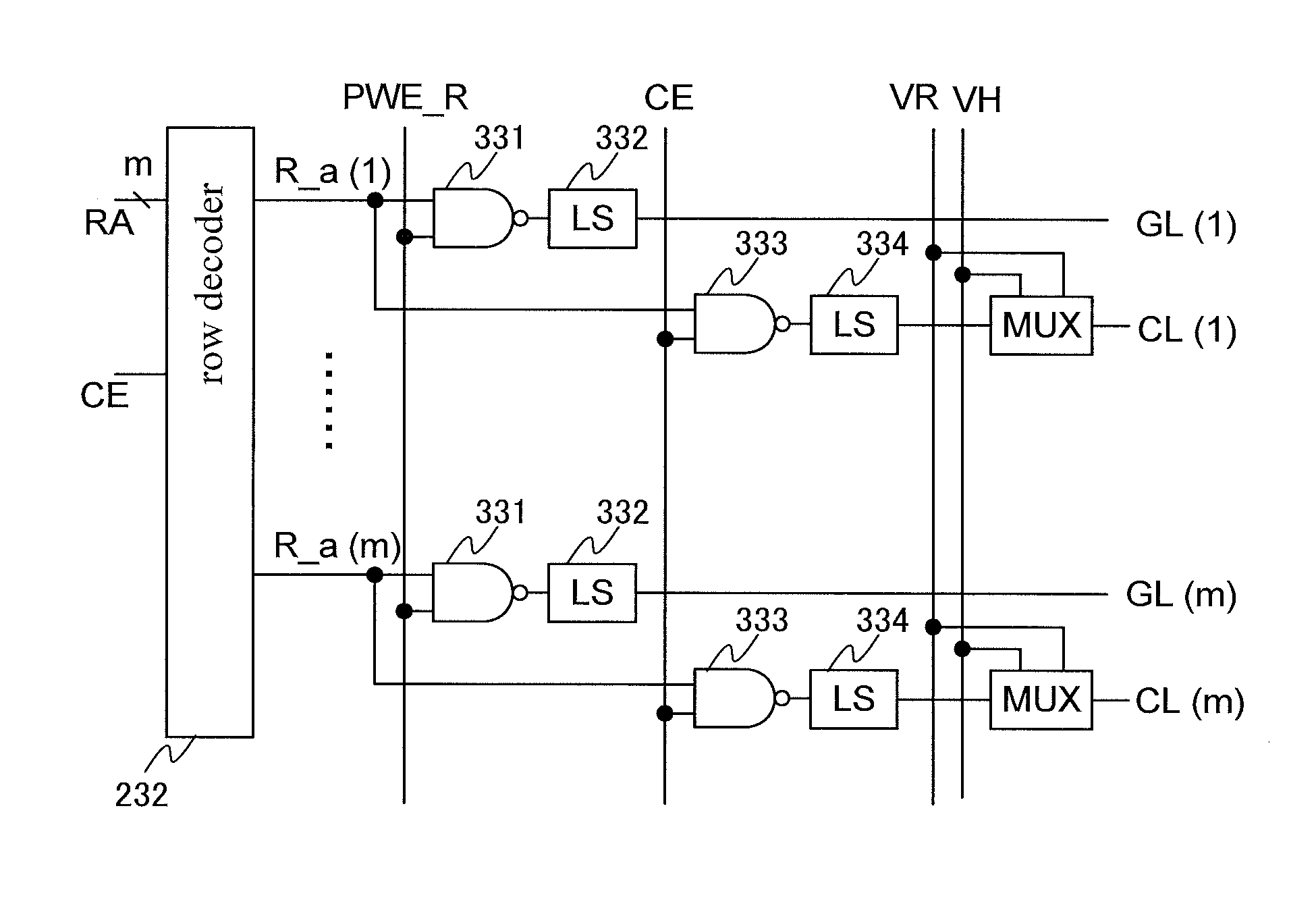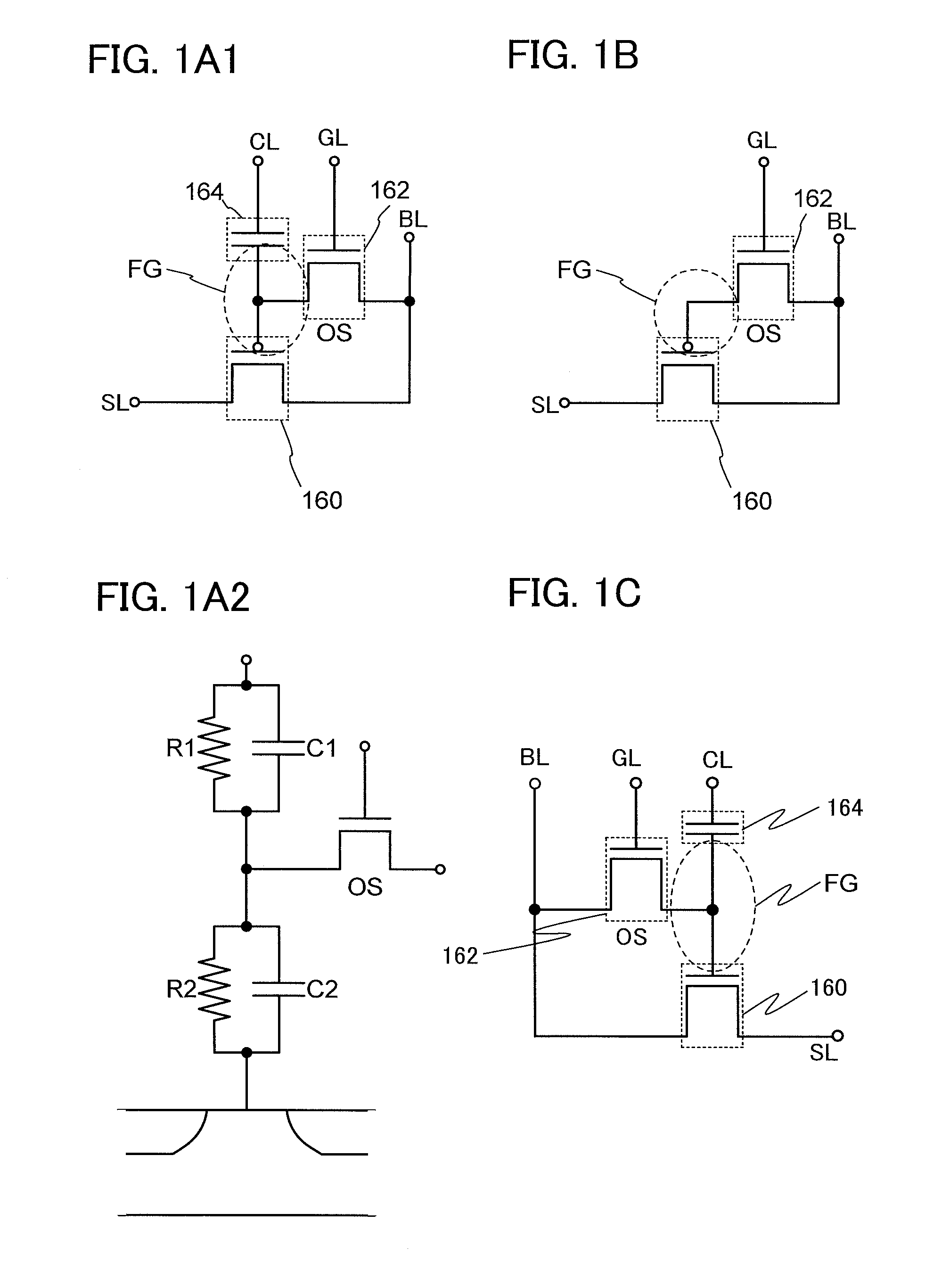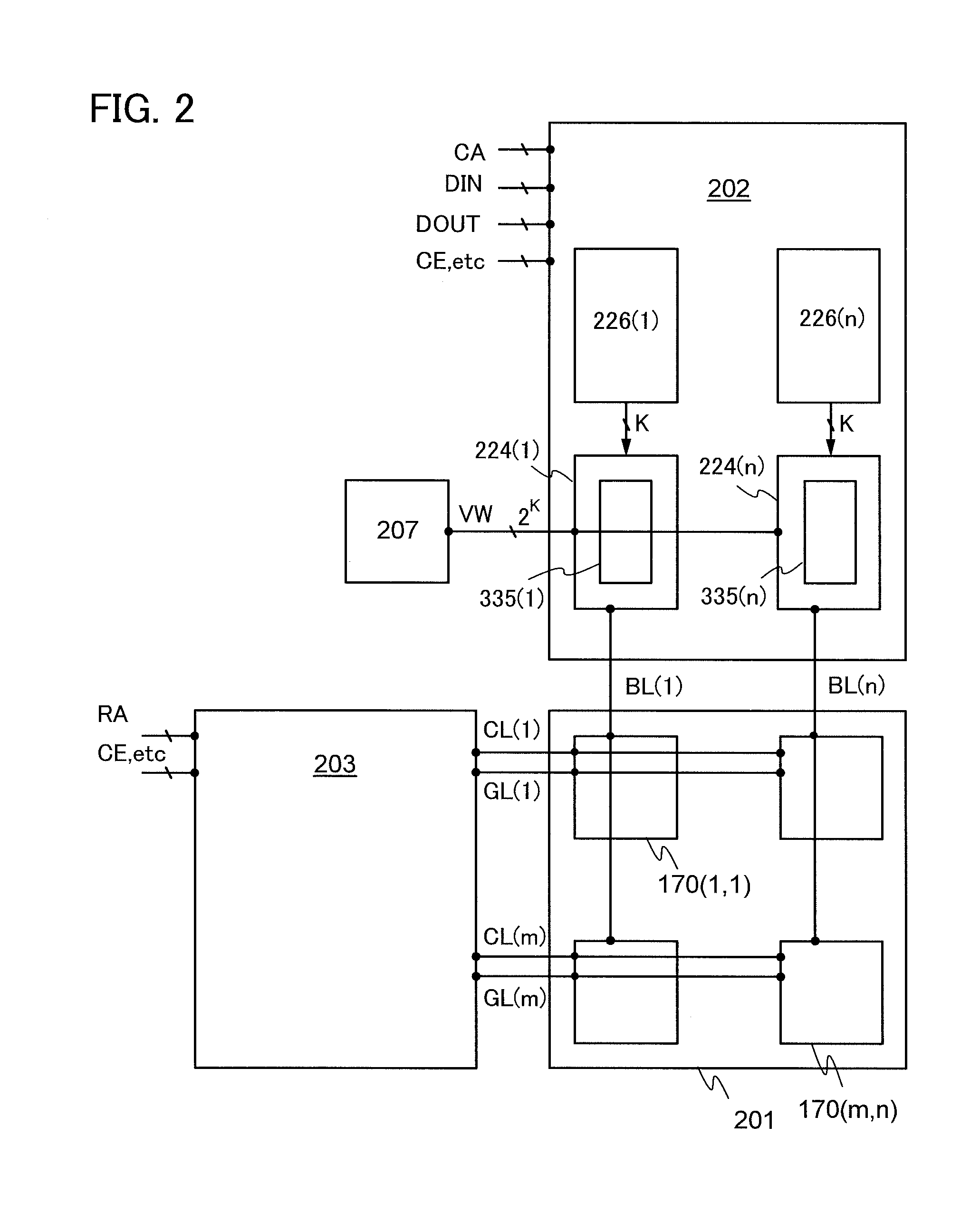Semiconductor device
a technology of semiconductor devices and semiconductors, applied in semiconductor devices, digital storage, instruments, etc., can solve the problems of increased cost per storage capacity, difficulty in sufficiently reducing power consumption, and stored data, so as to achieve the effect of reducing power consumption, storing data for an extremely long time, and avoiding the frequency of refresh operation
- Summary
- Abstract
- Description
- Claims
- Application Information
AI Technical Summary
Benefits of technology
Problems solved by technology
Method used
Image
Examples
embodiment 1
[0082]In this embodiment, a basic circuit configuration and operation of a semiconductor device according to one embodiment of the present invention will be described with reference to FIGS. 1A1, 1A2, 1B, and 1C. Note that in each of circuit diagrams, in some cases, “OS” is written beside a transistor in order to indicate that the transistor includes an oxide semiconductor.
[0083]First, the most basic circuit configuration and its operation will be described with reference to FIGS. 1A1, 1A2, 1B, and 1C. In a semiconductor device illustrated in FIG. 1A1, a bit line BL, a source electrode (or a drain electrode) of a transistor 160, and a source electrode (or a drain electrode) of a transistor 162 are electrically connected to each other. A source line SL is electrically connected to the drain electrode (or the source electrode) of the transistor 160. A gate line GL is electrically connected to a gate electrode of the transistor 162. A gate electrode of the transistor 160 and the drain ...
application example
[0114]Next, a more specific circuit configuration to which the circuit illustrated in FIGS. 1A1, 1A2, 1B, and 1C is applied and an operation thereof will be described with reference to drawings. In this embodiment, a so-called multi-valued memory which holds a plurality of states in one memory cell is described.
[0115]FIG. 2 is an example of a block diagram of a semiconductor device. A feature of a block diagram of the semiconductor device illustrated in FIG. 2 relates to writing operation of a driver circuit. The semiconductor device illustrated in FIG. 2 is a multi-valued memory which holds 2K-valued (K is an integer greater than or equal to 1) state in one memory cell and includes a memory cell array 201 including a plurality of memory cells, a column driver circuit 202, a row driver circuit 203, and a potential generating circuit 207.
[0116]The memory cell array 201 includes a plurality of (for example, m) gate lines GL and a plurality of (for example, m) capacitor lines CL, a plu...
embodiment 2
[0248]In this embodiment, a structure of a semiconductor device and a method for manufacturing the semiconductor device according to one embodiment of the disclosed invention will be described with reference to FIGS. 17A and 17B, FIGS. 18A to 18G, FIGS. 19A to 19E, FIGS. 20A to 20D, FIGS. 21A to 21D, and FIGS. 22A to 22C.
[0249]FIGS. 17A and 17B illustrate an example of a structure of a semiconductor device. FIG. 17A illustrates a cross section of the semiconductor device, and FIG. 17B illustrates a plan view of the semiconductor device. Here, FIG. 17A corresponds to the cross section along lines A1-A2 and B1-B2 in FIG. 17B. The semiconductor device illustrated in FIGS. 17A and 17B includes a transistor 160 including a first semiconductor material in a lower portion, and a transistor 162 including a second semiconductor material in an upper portion. Here, the first semiconductor material is preferably different from the second semiconductor material. For example, a semiconductor mate...
PUM
 Login to View More
Login to View More Abstract
Description
Claims
Application Information
 Login to View More
Login to View More - R&D
- Intellectual Property
- Life Sciences
- Materials
- Tech Scout
- Unparalleled Data Quality
- Higher Quality Content
- 60% Fewer Hallucinations
Browse by: Latest US Patents, China's latest patents, Technical Efficacy Thesaurus, Application Domain, Technology Topic, Popular Technical Reports.
© 2025 PatSnap. All rights reserved.Legal|Privacy policy|Modern Slavery Act Transparency Statement|Sitemap|About US| Contact US: help@patsnap.com



